Qolla Icke - a conglomerate plated 'Butte'?
Qolla Icke is located in perhaps the most stunning area of Malta. Spectacular scenery with a crazy assortment of gEUlogy. The Qolla is below Ras Il-Pellegrin headland with its weird Blue Clay Taluses, Cart Ruts off the cliff top and its Birth Of Rock area.
Near Fomm Ir-Rih Bay with its towering Irdum (Maltese for cliffs), huge syncline, Devils Slide, a stone beach (on a limestone island?) and much more.
On a group of islands with odd shaped and twisted hillocks (Qollas) Icke may be, when compared to its surroundings, perhaps the strangest and out of place Qolla of them all.
gEUlogy forum - DIScussion on Qolla Icke and other Qollas found in Gozo and Malta. Also Buttes around the world.
 Qolla Icke - how was it formed and what of?
Qolla Icke - how was it formed and what of?
Qolla Icke, by the seashore, stands out of its area for its shape and especially its composition. The exposed vertical sea cliffs near Icke, reveal the limestone that Malta is formed of. You would assume that the Qolla, on the same level, is made up of the same material but parts of its outside are different.
Qolla Icke seems to have "stone cladding" as a large amount of its outside is covered in a conglomerate of rocks and boulders. Undernearth and at the rear you can see normal limestone/sandstone. There is a small isolated section of very yellow limestone on its outside. How is the yellow material there? Is it the remains or the start?
What is strange about the rocks and stones covering? For a huge area of scree and massive boulders there are few rocks and stones. Yet they have ended up on the outside of the Qolla that perhaps should only be formed of limestone/sandstone.
Fatal or Fetal Attraction?
Icke has a 'tail' or mini arÍte/ridge that connects the Qolla to the land. You find this with a lot a few Buttes. The rear or tail area has less of the stone coating/layer. To one side is a 'pillar' or vertical layer that partially wraps around it, this includes the very yellow limestone.
The rest of Ickes surface is composed of stones, rocks and boulders in a conglomerate. Is it only the outside that has this boulder plating or cladding,is the front of it formed of rocks or the actual core?
Is the stone cladding there because the Electric Universe formation process was stopped, perhaps on its way to building a larger Qolla or hill? Is Icke a power or exchange point with the EU? Is this Qolla the remains of what was there, where the cliffs would have extended to?
Qolla Icke has a very yellow strip on its outside, twisting downwards similar to Qolla Safra. Where is the rest of this layer? If limestone/sandstone is sedimentary - deposited or formed in layers - then the whole width of the Qolla should be the same material. The material can change upwards but should not change sideways. The cliffs nearby show the layers of limestone at its level.
The photo on the right shows a section where the rock stops and the smoother inside material is exposed. Also note that some of the stones appear blackened, almost as if they were burnt. Does this show signs of the same process that causes vitrification?
Malta and Gozo have other chaotic areas of conglomerate rocks and stones in areas of gEUlogy (Electric Universe geology). The Fomm Ir-Rih syncline (middle upper section), an inlet near the Blue Grotto (you can see it on the boat trips) and also Halfa Rock (Gozo). Are they areas where the EU force is weaker, stronger, the area of or behind whatever caused the stress lines? How are these formed?
Minerals and the iron of Malta
The Blue Clay taluses have concretions that sometimes form rods. The outsides are covered in sharp gypsum crystals. The insides may have different coloured minerals and sometimes tiny black flakes of stones, almost shiny like obsidian (stone "crystals"?).
Geology informs us that it is impossible to have any natural black minerals on Malta as it is a limestone island. Unfortunately gEUlogy has to disagree as I have found a lot of black and grey stones in certain areas. One of them is on the stony beach of Fomm Ir-Rih where they actually come out of the Blue Clay.
Are the stones found on Malta and Gozo's beaches formed from the Blue clay, local area or from the sand? Is this the same for stone beaches around the world? Does this explain why pebbles and stones, although made of different coloured material, look like it should be and are one item.
If the Qolla has been formed by the standard models of geology and then eroded away, why and how has the bubbly mineral (photo on the right) formed? It is found high up on the outside and looks like it has always been there.
What's going down in the 'hood
Next to Qolla Icke are multihued sea cliffs, Globigerina Limestone. An odd fact about Malta's limestone layers is that the first and last layers are virtually the same. Above the cliffs wonderful Blue Clay taluses come out of the slope.
Geology guesses that Malta's Blue Clay was deposited in a marine environment. This means there has to be a physical limit of how much Blue Clay there is. The Peak Blue Clay Theory suggestst that if the Blue Clay never stops flowing out then it has to be created inside the land or where it "extrudes" out. Is this a (g)EUlogy to Geology? Is this the same for Salt Mountains and Hills?
Another feature of the Blue Clay is the horizontal lines or layers of different colours that stretch across many seperate taluses. Yet the whole talus when looked at going downwards appears to be a whole section and not seperate parts. Are these evidence that different types of Blue Clay were deposited? The fact that micro fossils are found in the brown layers of Blue Clay would suggest they were but could there be another explanation? Are they part of the islands exchange system with the EU? Are some simple fossils created by nature in an EU event as they are basic fractals?
Sandstone spits or platforms are found around Malta and Gozo. They protrude out into the sea. One of these is below Qolla Icke. About 30 yards away is another spit. How has the land been eroded between and around these 2 and left such rectangular slabs?
If things are scalable in an Electric Universe then are these variations of the Erebus Ice Tongue? A power or exchange point in an exchanging Earth.
* Qolla Safra - the twisting yellow small hill
* Qolla Tal-Merzuq (Ray of Light Hill) - volcano like and legendary hill
* Qolla Bajda - The white Qolla with iron concretions
* Qolla Icke - EYE view - photograph album
* gEUlogy articles - index / sitemap
* Geology forum - g(EU)logy to Geology
* gEUlogy forum - DIScussion on Tas-Salvatur Hill and other Qollas found in Gozo and Malta. Also Buttes around the world.
* Nipples (geology) - funny shaped Buttes, hills and mountains around the world

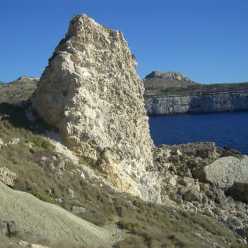
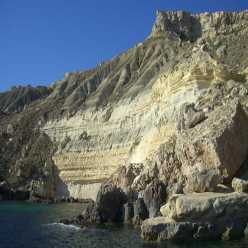
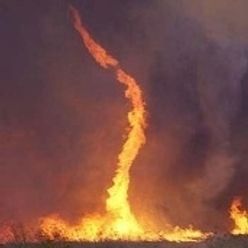
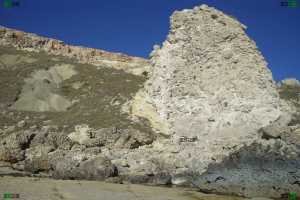

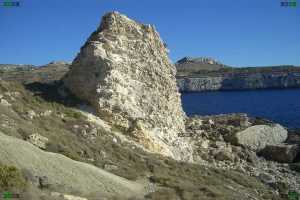

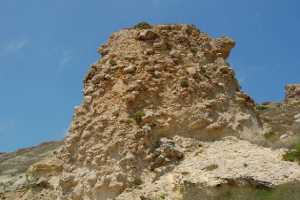

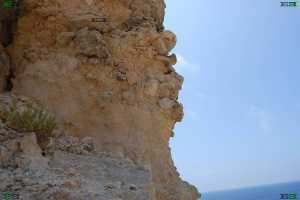
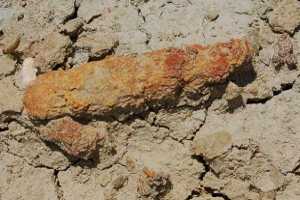
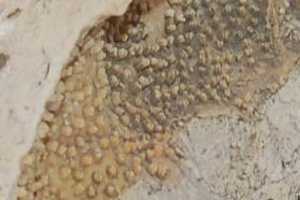

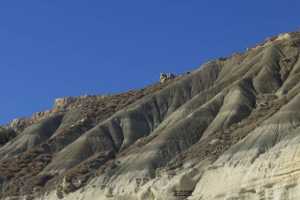


 whatdontyousee
whatdontyousee